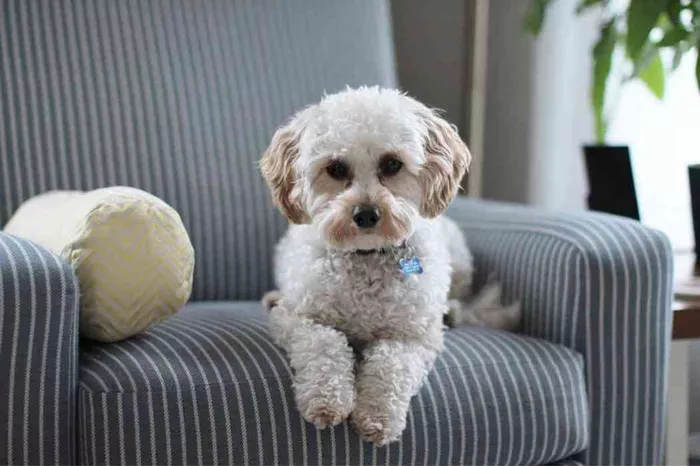The Cavapoo is a popular designer dog breed created by crossing a Cavalier King Charles Spaniel with a Poodle. Known for their affectionate nature and intelligence, Cavapoos have become favorite companion pets for many families. They typically inherit the friendly temperament of the Cavalier and the hypoallergenic coat of the Poodle, making them ideal for people with allergies.
Temperament and Personality
Cavapoos are known for being social, playful, and loving dogs. They thrive on human interaction and generally dislike being left alone for extended periods. Their gentle nature and strong attachment to their owners mean that separation anxiety is a common concern for this breed. Understanding these personality traits is crucial when considering how long Cavapoos can be left alone safely.
Can Cavapoos Be Left Alone?
How Long Can Cavapoos Stay Alone?
Cavapoos, like many companion breeds, do not do well when left alone for long durations. Puppies, especially under six months old, can usually only tolerate being alone for one to two hours. Adult Cavapoos can generally manage up to four hours alone, but this depends heavily on their training, temperament, and prior experience with being left alone.
Leaving a Cavapoo alone for more than four hours regularly can lead to anxiety, destructive behavior, or excessive barking. This breed’s social needs mean they require daily interaction and mental stimulation to stay healthy and happy.
Signs Cavapoo May Be Struggling When Left Alone
Common signs that a Cavapoo is distressed when alone include:
- Excessive barking or howling
- Chewing on furniture, shoes, or household items
- Attempting to escape confinement areas
- Pacing or restlessness
- Loss of appetite
These behaviors indicate separation anxiety and the need for interventions such as increased companionship or professional dog training methods designed to improve alone time tolerance.
Factors Affecting a Cavapoo’s Ability to Be Alone
Age and Development Stage
Puppies have limited bladder control and need frequent bathroom breaks, making long periods alone unrealistic. As they mature, their ability to stay alone gradually increases, but emotional needs remain high.
Training and Socialization
Proper training can help a Cavapoo learn to be comfortable when alone. Gradual desensitization, crate training, and positive reinforcement are effective methods. Early socialization also reduces the risk of separation anxiety by helping the dog adapt to different situations.
Environment and Comfort
Creating a safe, comfortable space with toys, water, and access to a potty area can ease a Cavapoo’s stress when left alone. Many owners use interactive toys or puzzle feeders to provide mental stimulation during their absence.
Owner’s Schedule and Lifestyle
The owner’s daily routine greatly impacts how long a Cavapoo can be left alone. Dogs in homes where someone can check in or take breaks to spend time with the dog tend to cope better.
Health and Wellbeing Concerns When Left Alone
Mental Health
Loneliness and boredom can lead to depression and anxiety in Cavapoos. Mental stimulation through play and companionship is essential to prevent these conditions.
Physical Health
Limited bathroom breaks and lack of exercise when left alone too long can cause physical discomfort and behavioral issues. Regular walks and playtime before and after alone periods help maintain health.
Practical Tips for Leaving a Cavapoo Alone
Start With Short Periods
Begin by leaving your Cavapoo alone for just a few minutes and gradually increase the time. This helps them adjust without becoming anxious.
Use Crate Training
Many Cavapoo owners find crate training useful for creating a safe den-like space. The crate should never be used for punishment but as a comforting place.
Provide Entertainment
Toys, especially interactive or treat-dispensing ones, keep Cavapoos busy and mentally engaged while alone. Rotate toys regularly to maintain interest.
Consider Dog Walkers or Pet Sitters
If you must leave your Cavapoo alone for extended periods, hiring a dog walker or pet sitter can break up their day and provide necessary companionship.
Maintain a Consistent Routine
Cavapoos benefit from predictable schedules for feeding, walks, and play. A consistent routine reduces stress and helps them feel secure even when alone.
Addressing Separation Anxiety in Cavapoos
Understanding Separation Anxiety
Separation anxiety is a serious issue in Cavapoos due to their social nature. It manifests in destructive behaviors and emotional distress when owners leave.
Behavioral Interventions
Gradual training techniques that teach a Cavapoo to associate alone time with positive experiences are essential. Consult a professional for tailored training methods if anxiety persists.
Use of Calming Aids
Products such as calming sprays, anxiety wraps, and background noise (like music or TV) can help soothe an anxious Cavapoo during alone time.
Long-Term Solutions for Owners
Doggy Daycare Options
For busy owners, doggy daycare offers socialization and supervision. This option ensures your Cavapoo receives attention and exercise even when you are away.
Adopting a Companion Dog
Some Cavapoo owners find that adopting a second dog can reduce loneliness. However, compatibility and additional responsibilities must be considered.
Work-From-Home and Flexible Schedules
If possible, arranging a flexible work schedule or remote work can increase your presence at home, greatly benefiting your Cavapoo’s emotional health.
Conclusion
Cavapoos are affectionate, social dogs that generally do not like being left alone for long. While adult Cavapoos can tolerate short periods of solitude, it is essential to monitor their behavior and provide appropriate training and enrichment. For longer absences, dog walkers, daycare, or pet sitters are recommended to prevent separation anxiety and ensure the dog’s wellbeing.
Related topics:
How to Train Corgi Puppy Not to Bite
How Much Does It Cost to Spay a Maltipoo?


